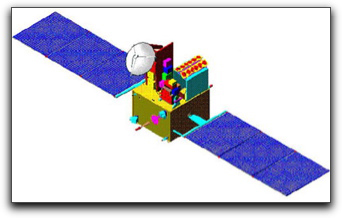ISRO Set To Launch Oceansat-2... + 7 Others!
Seven satellites in 1,200 seconds — that's one heckuva launch — in fact, there was one similar in April 2008 when India's ISRO launched 10 satellites. The ISRO is all set to put six nano satellites and one major ocean satellite into orbit on Wednesday from Sriharikota. The final 51-hour countdown started on Monday at 9:00 a.m.

Of the six nano satellites, four are from Germany, one is from Switzerland, and one is from Turkey. The seventh is a big one — India’s
Oceansat-2, weighing in at 960 kg. From the time of launch to ejection of satellites, the time required will be about 1,200 seconds. While
Oceansat-2 is set to be ejected after 1,055 seconds, four nano satellites will be ejected in the following 45 seconds. Two others are meant to stay with the fourth stage of the
Polar Satellite Launch Vehicle (PSLV) rocket, which will be on its own once the different stages of the rocket get separated.
The sequence of ejection is very similar to the April 2008 launch featuring one big satellite,
Cartosat-2 A, and nine other nano satellites, 10 in all: once the
PSLV takes off and reaches a certain height and velocity, it will first launch the Oceansat-2 and, a few seconds later, the first of four nano satellites. Every 10-12 seconds thereafter, the PSLV will launch four satellites, one after the other, with two remaining with the fourth stage of the PSLV.
Oceansat-2, India’s second satellite that will study oceans as well as the interaction of oceans and atmosphere, is the 16th remote sensing satellite of India. The satellite is a cuboid with two solar panels projecting from its sides. The satellite will map fishing zones around India, measure ocean surface windspeeds as well as atmospheric temperature and humidity. This will be the PSLV’s 16th mission. From September 1993 to April 2009, PSLV has been launched 15 times — 14 launches have been successful.
Topical Tags :
Regional Tags :

